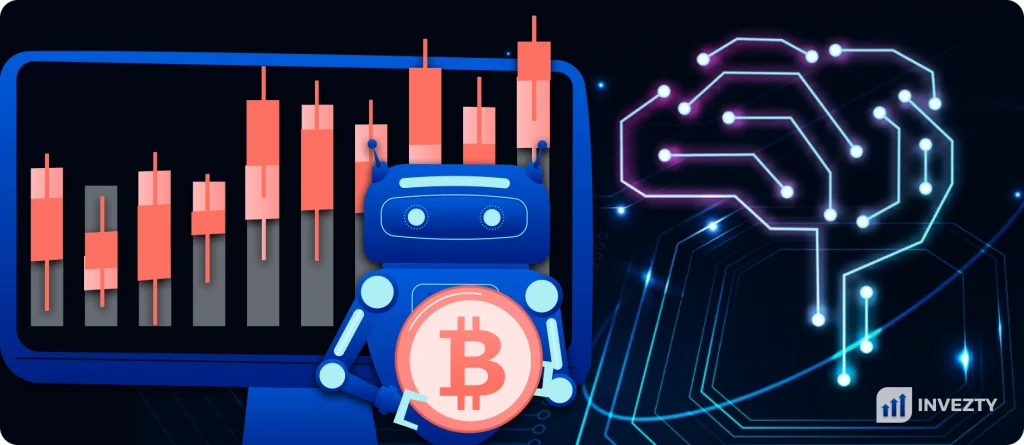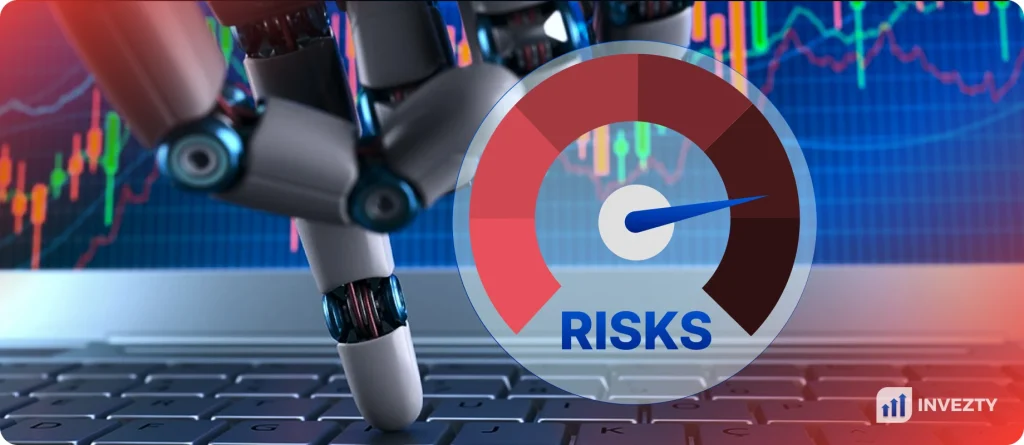Claire Maumo wears multiple hats. She is a leading crypto and blockchain analyst, a market dynamics expert, and a seasoned financial planner. Her blend provides a unique combination that she leverages to offer expert analysis of economic and market dynamics. Her pieces deliver a holistic approach to the game, building your confidence and securing your financial future. Follow her for a comprehensive approach to mastering your trading journey.
We may receive compensation from our partners for placement of their products or services, which helps to maintain our site. We may also receive compensation if you click on certain links posted on our site. While compensation arrangements may affect the order, position or placement of product information, it doesn’t influence our assessment of those products.
Advancements in technology have brought a lot of improvements to the financial space. Automated trading is one of the features that has proven efficient in this landscape. Its increased efficiency and ability to eliminate emotional trading have made it popular. As a result, many are trying to figure out how it works.
Our ultimate guide below sheds light on automated trading for beginners. These include understanding how it works, the risks and benefits, and more. Ultimately, you should be able to understand how this trading method can elevate your activities.
What is Automated Trading?

Automated trading is a method in which traders utilize computer programs and algorithms to execute trades in the financial markets. In automated trading, computer programs automatically analyze market data. They then identify the best entry and exit points and execute trades without human intervention.
The best element about automated trading is that traders get to set parameters for their positions. This, of course, is after conducting thorough market research and analysis. The automated trading programs will then take over managing your activities from start to finish. This means you no longer need to spend hours tracking your positions. Instead, you can focus on other elements that will improve your performance in the financial landscape.
Automated trading also relieves the stress of controlling your emotions and basing your decisions on them. Since the built parameters control your activities, you will barely track your positions. The algorithms will use your pre-determined strategies to follow trends and execute trades once they identify potentially profitable opportunities.
How Does it Work?
Automated trading is flexible, making it easier for traders to explore diverse trading styles. For instance, automated trading allows you to explore the rising and falling prices of various asset classes. Also known as CFD trading, you get to speculate on whether an asset’s price will rise or fall without taking full ownership.
To enjoy the automated trading feature, you will first need to choose the right automated trading platform. Then, set parameters for your CFD trading strategies, which are the rules and conditions for trade. The computer programs and algorithms will then execute trades on your behalf based on these parameters. For instance, you can set the price at which a trade should be opened and closed. You can also set your preferred trade size to ensure you stick to your budget.
Note that applying automated trading in CFD positions gives you exposure to leverage trading. This means you can deposit a small capital to control a larger position. While leverage or margin trading can bring about huge profits, losses are inevitable. Therefore, do not be too excited about it, but be cautious to avoid massive losses. You can only risk funds you are comfortable losing in case a trade works out against you.
Traders also use automated trading in brokers’ copy trading feature. Using your predetermined conditions or set parameters, computer programs automatically copy expert traders’ positions. These are the traders you will be following and tracking their performances. As a result, you get to earn profits when they do, as well as losses when they occur.
How to Start Automated Trading
Whether you are into forex, shares, cryptocurrencies, commodities, or more, you need to master the proper procedure to get started. Below are the simple steps for beginners.
Before you engage in automated trading, learn everything about it. This is from understanding how it works to set it up. You can utilize brokers’ learning materials to boost your skills in automated trading. There are also online guides, articles, YouTube channels., podcasts, and more to help you get started.
Once you are familiar with automated trading, identify the best broker offering automated trading solutions. This means you must conduct thorough market research that involves multiple tests and comparisons. You can consider elements like regulatory status, affordability, asset offerings, demo account availability, and more. If you find the research process lengthy and overwhelming, our website recommends the best brokers. We rank them in various categories to ensure you meet what aligns with your trading requirements.
To start automated trading, you will have to create an account with the broker you have selected. Many brokers regulated by tier-one authorities have almost the same account registration processes. Simply put, create an account by clicking the sign-up or register button on the broker’s homepage. You will use your personal details in this process. These include your name, email, phone number, location, date of birth, and more.
And to keep the online trading platform safe, your broker may request that you verify your identity and location. This involves sharing copies of your ID and a recent utility bill. Depending on a broker, verification may take up to 2 days to complete. You simply have to wait for an email notification.
Once your account is fully activated, make a deposit. Consider a broker’s minimum deposit requirement and ensure it is within your budget. For most automated trading brokers or platforms, deposits are allowed using various methods. These include bank transfers, credit/debit cards, and e-wallets. Your deposit will be confirmed, after which you will automatically be redirected to your broker’s platform to execute automated trades.
It’s time to put your automated trading strategy in place. You can start by identifying the right trading style and timeframe. These can include day trading, swing trading, scalping, and more. Then, study the market charts and asset prices to identify the best entry and exit points. Once done, activate the automated trading feature and let the computer programs take over. You can still track your positions to ensure everything works out as expected and make the necessary adjustments if need be.
Note: As a beginner, always backtest your automated trading strategies before implementing them. This allows you to identify areas for improvement before investing real funds in a trade. You can utilize brokers’ demo accounts to gauge your skill level, as they are risk-free and virtually funded.
Automated Trading Risks

Like any other trading method, automated trading has its own risks. For instance, there is a risk of technical failures. These can include system crashes, internet connectivity issues, and data inaccuracies. There is also the possibility of programming errors in strategies, which may leave you with losses.
As a trader, we advise you not to consider automated trading as a substitute for manual trading. With these risks, the systems require constant monitoring so you can make quick moves in case you identify something that will jeopardize your position.
Benefits of Automated Trading
Automated trading isn’t just a market trend. It offers traders essential tools to mitigate risks while maximizing their potential. Its main benefits to traders include:
- Reduced Human Intervention: Automated trading eliminates the need for human or manual trading. Instead of basing decisions on emotions like fear or greed, this trading method focuses on strategy and market trends.
- Improved Trade Execution: Computer programs and algorithms thoroughly analyze the financial markets for solid strategies based on predefined conditions or parameters. You will execute multiple trades with no manual intervention.
- 24/7 Market Access: Algorithms and computer programs do not get tired. Therefore, they give traders access to the financial markets 24/7. This allows you to maximize on arising market opportunities, even during wee hours.
- Saves Time: You no longer have to spend hours tracking your open positions in the financial market. Automated trading removes this stress, thus reducing time costs.
- Ability to Backtest: Automated trading makes it easier for traders to backtest strategies. You will be able to calculate an asset’s past performance to see whether a strategy would have been profitable.
- Lower Transaction Costs: Automated trading reduces transaction expenses, which usually accumulate with each manually managed trade. Its efficiency leads to managing fewer trades.
Disadvantages
While automated trading carries many benefits, a few pitfalls have been noted. These include:
- Knowledge of Technology: You need to be well-versed in technology and computer programs to benefit from automated trading. This limits traders who are not knowledgeable about this technology.
- Prone to Technical Issues: Technical issues like system crash or internet connectivity issues may negatively affect your open positions. As a result, you may end up with losses.
- Market Exaggerations: Automated trading systems may exaggerate market movements, thus negatively affecting your positions.
- No Profit Guarantee: Automated trading is not a sure-fire way to manage successful trades. You still must conduct thorough market research to set the best trading parameters.
FAQs
Absolutely. Automated trading has proven profitable when approached strategically. Remember, this system executes trades based on predefined conditions. This means that you must be familiar with how automated trading works and can conduct thorough market analysis for solid strategies. However, losses are inevitable with automated trading.
Yes. Automated trading can be a good idea if you are looking for a technique that focuses more on predefined conditions. It helps traders avoid basing their decisions on emotions like greed and fear. It can also be a good idea for traders looking for a low-maintenance strategy that focuses primarily on advanced technology.
Absolutely. Automated trading is legal for as long as you use it with brokers that are licensed and regulated by top-tier authorities. Such brokers offer a secure trading environment and adhere to various countries’ local laws regarding financial space.
Yes. Automated trading is suitable for any beginner trader familiar with computer programs and trading algorithms. However, incorporating it in your trades doesn’t guarantee profits. That is why you should start with a small capital and increase it as you become independent. Plus, backtest your strategies before opening a live position to ensure you are fully prepared to risk your money in the financial space.
Conclusion
Automated trading helps traders increase their efficiency in trades. However, it is not a sure-fire way to success as computer programs are prone to errors. While the activity has proven beneficial, we advise you to alternate between automated and manual trading. This will enable you to understand where you fall short in case of a loss and quickly improve on it. Plus, have the best automated broker or platform in your corner. It will be easier for you to put all your focus on market analysis without worrying about affordability, safety, reliability, and more.
For beginners, learn everything about how to automate trading and backtest your strategies before trading on a live account. By eliminating emotional trading, automated trading could be your ultimate gateway to successful trades.
